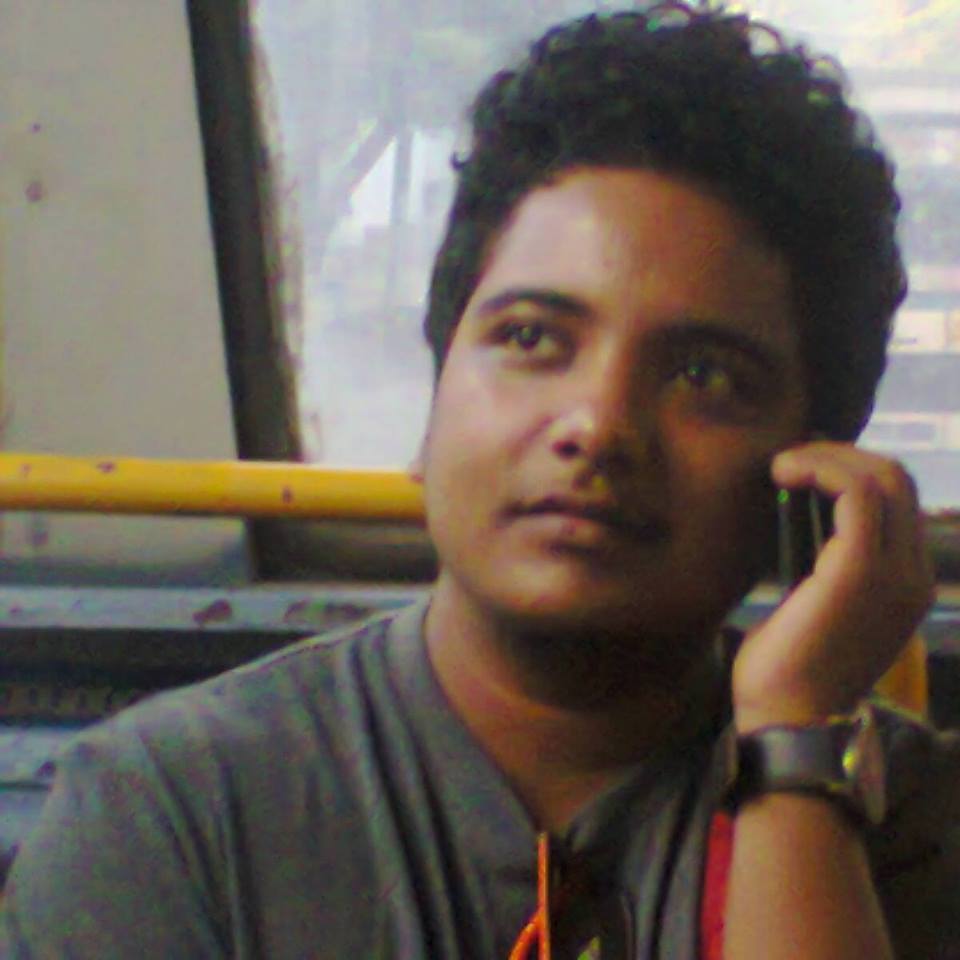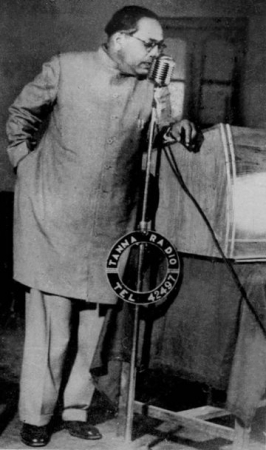Kuffir
If India were a country of 18 crores, instead of 118 crores or so, all the excitement in the media would make more sense. A panelist on a TV debate on the Union Budget, for instance, expresses warm approval of a particular proposal, saying: ‘infrastructure would help the poor more than subsidies in the long run’.
 There are several presumptions impelling that little outburst: one, the poor don’t want infrastructure, or don’t understand its value or are shortsighted or hold all of those attitudes, opinions. Two, the poor want sops and handouts, and therefore are lazy and suffer from a weak work ethic. Three, infrastructure is meant for everyone, even if it is a games village worth 60,000 crore rupees in Delhi which starts crumbling down even as it is being built. Four, subsidies are for exclusively the poor, and most of them don’t go to the non-poor.
There are several presumptions impelling that little outburst: one, the poor don’t want infrastructure, or don’t understand its value or are shortsighted or hold all of those attitudes, opinions. Two, the poor want sops and handouts, and therefore are lazy and suffer from a weak work ethic. Three, infrastructure is meant for everyone, even if it is a games village worth 60,000 crore rupees in Delhi which starts crumbling down even as it is being built. Four, subsidies are for exclusively the poor, and most of them don’t go to the non-poor.
As caste is a state of mind, as Dr Ambedkar said, we’ve come to accept that kind of biased discourse as normal in savarna media: how can it be different when their minds and consciousness work in that fashion, dividing the world into normal ‘us’ and the errant ‘others’?
Infrastructure is important for poor, mostly Dalitbahujan, Indians too. 70% of rural homes don’t have toilets, and those which do have toilets are not connected to any sewerage systems. Who would understand the need for infrastructure better than them? Yes, they understand the need for roads, the need for toilets, and the need for freedoms that infrastructure could represent more intensely than anyone else. But in India, we need to understand, there is infrastructure and there is pure infrastructure.
The opportunity cost of pure infrastructure
The games spectacle, in the collective consciousness of savarna India, was necessary because it would change the way the world sees India, and thereby make Indians feel good about themselves: it was pure infrastructure. It would also mean a lot of economic benefits for the country, indirectly: an increase in tourist revenues for instance, to name one such benefit.
But poor sanitation could wipe away all those benefits. Poor sanitation does wipe away all those benefits, according to the World Bank. India loses over 260 million dollars in tourism revenues annually because of lack of that kind of infrastructure. But that’s not all it loses. To quote:
Inadequate sanitation causes India considerable economic losses, equivalent to 6.4 per cent of India’s GDP in 2006 at US$53.8 billion (Rs.2.4 trillion), according to The Economic Impacts of Inadequate Sanitation in India, a new report from the Water and Sanitation Program (WSP), a global partnership administered by the World Bank.
$54 billion. More than half the size of the estimated fiscal deficit this year (2012-13). Nearly one and a half times the size of the estimated total subsidies bill this year. Who actually pays for the subsidies?
Even if one family continues to defecate in open spaces and wash in water sources, it will have a negative impact on the entire village, another report says. We have over 60% of the population driven to open spaces and dry toilets, so all impact calculations could only be very optimistic. Most of that cost of $54 billion is borne by the country’s poor.
But forget the World Bank, the other experts and their purely material concerns: what do they know of the politics of poor sanitation infrastructure? Forget the economics, think of the socio-cultural impact that better infrastructure could have. It could mean 600 million newly empowered people. Is that good for the savarna economy of the chosen 18 crores who so desperately need the rest 100 crores to get used to indignity in one form or the other every day so that they learn to be content with less recompense for all their sweat and suffering, all the time? They need to be taught indignity, or caste, every day for India to shine.
This article does not attempt to build a case for better sanitation infrastructure alone, but uses it to explore how the brahminical minds that use state power to shape or misshape India’s material realities work.
A society that sprang from a dry toilet
If the hand mill gives you a feudal society, what kind of a society springs from a dry toilet?
 A society that breeds Savanurs, obviously. A diseased society. If every home in India has a wet latrine or toilet, it’d also mean that every home has access to piped water. But for every home to have piped water, every individual needs to have a say on how the rivers would be tapped, how the lakes and tanks would be used, how water would be shared. How resources would be shared. Which means his rights would have to be recognized without him having to smear himself with shit.
A society that breeds Savanurs, obviously. A diseased society. If every home in India has a wet latrine or toilet, it’d also mean that every home has access to piped water. But for every home to have piped water, every individual needs to have a say on how the rivers would be tapped, how the lakes and tanks would be used, how water would be shared. How resources would be shared. Which means his rights would have to be recognized without him having to smear himself with shit.
But that would militate against the upper caste or upper shudra ruler’s narrative of ‘development’. It would go against his right to privileges- his right to large dams, his right to bottle up rivers and feed cash crops and golf courses. His right to pure infrastructure; his right to plunder nature, his right to excess and waste. His right to order society just the way his forefathers would have wanted.
Dry toilets play a useful role in his economics: why would anyone who has had access to such privileges as clean, private toilets accept such crap as working for wages lower than minimum? Once you taste that kind of privileges, you start thinking of them as your rights. The Indian ruling classes understand that clearly: no basic sanitation means lower wages, always.
Savanur is in Karnataka, a state where successive governments in the last one decade or so have been rapidly building one large dam after another to harness all large and small rivers to irrigate its fields. So why are the toilets in Savanur dry? What do manual scavengers do in Pandharpur and other busy towns while the Maharashtra government has been spending tens of thousands of crores in the last few years to build its irrigation ‘potential’? The Andhra Pradesh government has started work over fifty big dams in the last 6-7 years, but who is cleaning the dry latrines in towns across the state and the sewers in the cities? Jairam Ramesh, Union Minister and Rajya Sabha MP from the state, wisely observes, very Muthalik-like, that Indian women seem to prefer mobile phones over toilets. The toilets governments across states are building have no access to piped water or drainage systems. Would anyone prefer mobile phones without sim cards?
Unbridled greed for water, and power that flows from it, is the key element in this story, the crocodile in the pond. The three states named earlier have together spent anywhere between one and a half lakh to two lakh crores on large scale irrigation in the last ten years. They’ve also gone to war, almost, over waters and rivers, but the Dalitbahujan majority in those states will hardly ever receive a drop of water, from all those projects being built, in their homes. Even a fraction of the water that is sought to be harvested so recklessly, ecologically speaking, if managed judiciously could solve most of the sanitation problems in the country. But for a society to graduate from a dry toilet to a wet toilet isn’t as simple as building eight lane highways or cable stayed bridges. It is almost like time travel.
The panelists in the TV studio would have to travel ahead in time to a society where the Savanur protesters live. Cover themselves in shit to realize how necessary is freedom, freedom to imagine a society where its economists and experts are not chained to dry toilets, and all the institutions and structures that accompany them.
Wipe some savanur with your subsidies
But that’s only one side of Savarna duplicity: the selling of privations as a necessary cost for building pure infrastructure as against real infrastructure that everyone would benefit from, as a bitter medicine that’s good for the Dalitbahujans. Large dams and games against sanitation and drinking water. The other side is presenting schemes and subsidies as largesse and magnanimity. But let’s remember the rule: the Savarna always takes away more than he gives, just as he always destroys more than he builds.
Dalitbahujan concerns or perspectives are only contingent concerns and perspectives; they have very little chances of invading the worldview of those presenting budgets and those advising or controlling them. The proposal of Special Plans for Dalits and Adivasis was one such idea which fortuitously gained the rulers’ attention, thirty years after independence. And it has never again engaged their sincere attention for another thirty years after their initial nod.
The amount of funds siphoned away from projects/plans meant for the Dalits and Adivasis in the last 34 years, after the Sub-plans were started, would run into several lakh crores, in current prices. Last year alone, over Rs.24,570 crores from the Scheduled Castes Sub-Plan (SCSP) and another Rs.10,530 crores from the Tribal Sub-Plan (TSP) of the central government were looted, or diverted, euphemistically speaking, according to the National Campaign on Dalit Human Rights. NCDHR says, the funds allocated to the sub-plans were a meagre 4.03% (remember, Dalits and Adivasis together constitute 24.4% of the total indian population) of the total Union Budget for 2011-12, and even from that token acknowledgement of a statutory obligation, more than half the funds were diverted. The situation is equally worse in the states: in Andhra Pradesh, Dalit activists estimate, over Rs.40,000 crores were diverted (the figure seems to be on the lower side because it does not appear to represent the net present value of the funds looted which were more than half the funds due, on an average, every year) in the 19 year period between 1992-93 and 2010-11.
What do the subsidies do for the Dalits and the Adivasis?
Nothing, as this table illustrates.
Table I. Assumed Dalit-Adivasi Share in Subsidies/Loot of SCSP/TSP Funds

*Figures in Column [B] are based on the assumption that Dalits/Adivasis consume a share in subsidies equivalent to their share in population (24.4%).
+ Figures in Column [C] are more realistic estimates of subsidies consumed by Dalit/Adivasis assuming that half of all subsidies never reach beneficiaries due to leakages.
~
The sordid truth behind the Indian state’s budgetary concern, its magnanimity, has been that every year it has taken away more funds due to the Dalits and Adivasis, on an average, than the subsidies it has given them!
The revised estimates of the expenditure on subsidies in both 2010-11 (rs.1,23,936 crores) and 2011-12 (rs. 1,44,000 crores), which would mean the share of of Dalits/Adivasis in subsidies were actually higher, ultimately, going by the assumption that their share in subsidies equals their share in the population (24.4%): those were aberrations, obviously, if you look at the earlier 34 year history. Those revisions were due to the unprecedented increase, over 100-200%, in global oil prices in both years. And to assume the Dalits/Adivasis consume 24.4% of all subsidies, as in Column [B], is to be very optimistic.
So the figures in Column [C] present more realistic estimates, factoring in realities like leakages which eat away more than half of all subsidies. When you compare the figures (realistic estimates of subsidies consumed by Dalits and Adivasis, each year) in Column [C] with the figures (funds rightfully due to SCSP and TSP but not allocated in budgets and diverted to other projects/plans, or looted, to put it plainly) in Column [E], you’ll realise that the government takes away much, much more from the Dalits and the Adivasis (through looting from SCSP &TSP) than it gives to them through subsidies!
If the SCSP and TSP funds were fully and effectively uitilized, there would have been remarkable change in the lives of a large number of Dalits and Adivasis in the country. What was pledged to them by the Indian state, it tuns out, wasn’t worth a savanur.
This year, 2012-13, the total allocation for SCSP and TSP funds comes to around Rs.95,410 crores (of a total central plan expenditure of 3,91,027 crores), of which two-thirds would go towards revenue plan expenditure. But there’d be enough
* to build pucca homes, with toilets, for nearly one-third the 5 crore or so poor dalit and adivasi families in the country, or
* provide each of the 5 crore poor Dalit and Adivasi homes with a dole which could be much higher than the sum of all the benefits they get, in cash terms, from all the subsidies and schemes that the government entices them with, only to take away a much bigger sum from the SCSP and the TSP, or
* use it in any other fashion; because if the Dalits and Adivasis have, say, autonomous control over those funds, and similar looted funds in the states, they could always use it more efficiently than the short-sighted Savarnas now squandering them, shamelessly.
~ Note: The figures in the Table represent some quick calculations (so there might be some minor discrepancies or errors in figures, but the sense of what they say won’t change, in my view) based on data presented at the India Budget site, especially the pages ‘Budget at a Glance- Expenditure‘ for (2011-12) and ‘Budget at a Glance- Expenditure‘ (for 2012-13). Other figures, pertaining to allocations to and diversion from SCSP and TSP were gleaned from this NCDHR press release and from this news article by Divya Trivedi in The Hindu. And thanks, Karthik Navayan, for sharing reports and inputs, regularly.
~~~
Cartoon by Unnamati Syama Sundar.










